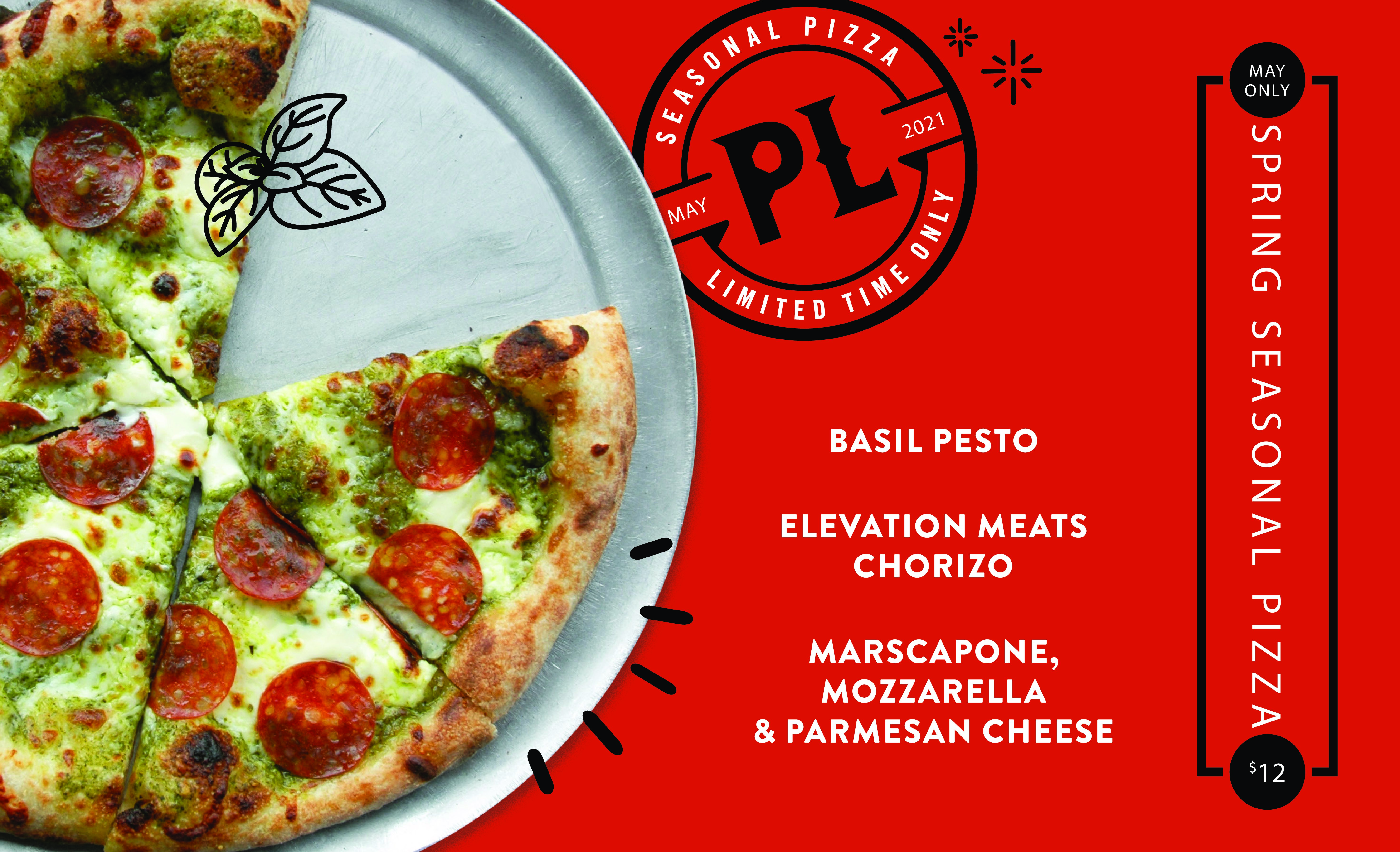It’s spring here in Colorado, and we are making springtime even better— by bringing you a special new seasonal pizza! Close your eyes and picture it… our beautiful Neapolitan crust, topped with basil pesto, Elevation Meats chorizo, and mascarpone, mozzarella, and parmesan cheeses. Yum!
Using pesto on our pizzas is new for us, so let’s take you on a little tour of this herbaceous sauce and its ingredients…
It all started in Genoa
Travel north along the coast from Naples, and eventually you’ll come to Genoa, another port city with a long history—and a wide reach, as the Genoan Republic stretched all the way to Sardinia and Corsica! It’s where you’ll find the origins of pesto, a sauce consisting of crushed garlic (from Vessalico), European pine nuts (from Pisa), coarse sea salt, basil leaves (from Prà), and hard cheese such as Parmigiano-Reggiano (also known as Parmesan, from Emilia-Romagna) or Pecorino Sardo (cheese made from sheep’s milk), all blended with Ligurian olive oil.
The name pesto comes from a Genoese verb that means “to pound” or “to crush,” since, according to tradition, the ingredients are ground in a marble mortar using the circular motion of a wooden pestle.
A Latin poem from the year 25 CE describes pounding together herbs, cheese, oil, and vinegar, which makes pesto the oldest recorded sauce in European cuisine (and one of the few to have a poem written in its honor!). And Italy fell in love with basil pesto in the centuries since. Pesto is a wonderful addition to any number of dishes, though it probably originated as a sauce to go over pasta—quite properly, they’re a match born in culinary heaven. In Italy, pesto is traditionally served with gnocchi and the short Ligurian pasta twists called trofie.
And Genoa takes its sauce seriously! Every other year the city hosts the World Pesto Championship, which attracts chefs from around the world (though it was live-streamed this year due to Covid-19). The championship is a showcase of international ability and Ligurian excellence, and also a means to share the qualities of an ancient land. Countless Ligurian municipalities, cultural, and business associations, Italian and foreign institutions and institutes support the candidacy of Genoese Pesto (prepared using marble mortar and wooden pestle) at the Italian National Commission for UNESCO as a “best practice of humanity’s intangible cultural heritage.”
What’s special about pesto?
This is where we pick up the story. Pesto became popular in the United States in the 1970s, and soon evolved from a mortar-and-pestle-only affair into a shelf-stable grocery store product, though savvy cooks still make their own.
The trick to great pesto is in the basil itself, and the first consideration is this: the basil has to be fresh! Dried basil tastes completely different from fresh leaves, and that freshness makes all the difference in pesto. Fresh basil leaves also contain their own moisture in the form of both water and natural oils, contributing to pesto’s creaminess.
The Italians are onto a good thing, with local basil varieties a staple of real Italian home cooking: some say their fragrant, near-glossy dark-green leaves make the best pesto in the world. And while these days pesto has become a catchall term for anything herbaceous and thrown into a blender, the Genoese will tell you that true pesto comes from an alchemy that can exist only in its birthplace.
Come see for yourself!
Pesto (without nuts) is a new ingredient for us here at Pizzeria Locale, and we’re sure you’re going to love what Chef Jordan does with it in our Spring Seasonal pizza. It’s available throughout May for only $12, and you can order in person, on our app, or online at www.pizzerialocale.com.



